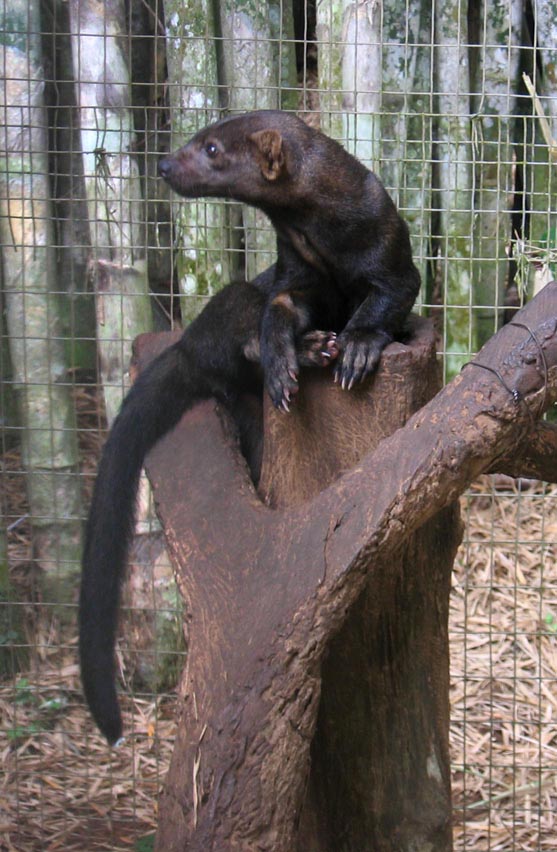|
Tayra (Eira barbara) - Wiki
| 제목: | Tayra (Eira barbara) - Wiki
| |

| 해상도: 557x852
파일크기: 113215 Bytes
촬영일: 2004:04:24 18:54:55
사진기: Canon DIGITAL IXUS 400 (Canon)
F number: f/4.5
Exposure: 1/20 sec
Focal Length: 587/32
등록시간: 2007:10:23 11:13:54
|
Tayra
From Wikipedia, the free encyclopedia
[Photo] A Tayra (Eira barbara) in the Summit Botanical Gardens and Zoo, Panam??. Date 24 April 2004. Photograph taken by Dirk van der Made (http://commons.wikimedia.org/wiki/User:DirkvdM). Copyright (C) 2004 Dirk van der Made
Permission is granted to copy, distribute and/or modify this document under the terms of the GNU Free Documentation License, Version 1.2 or any later version published by the Free Software Foundation; with no Invariant Sections, no Front-Cover Texts, and no Back-Cover Texts. A copy of the license is included in the section entitled "GNU Free Documentation License". |
The Tayra (Eira barbara), also known as the Tolomuco or Perico ligero in Central America, is an omnivorous animal from the weasel family Mustelidae. It is the only species in the genus Eira. Tayras have an appearance similar to weasels and martens, growing to a size of about 60 cm, not including a 45 cm long tail. Most tayras have either dark brown or black fur with a lighter patch on its chest. The fur on its head changes to brown or gray as it ages. Tayras grow to weigh around 5 kilograms (11 pounds). The Tayra, unlike other Mustelidae, does not have embryonic diapause otherwise known as delayed implantation (this reproductive strategy in other mustelids delays embryonic development and allows the female to delay birth of offspring until environmental factors are favorable). The female gives birth to 2 to 4 altricial, black-coated young.
Tayras live in the tropical forests of Central and South America where they eat mainly fruit, but also carrion, small mammals and birds. They live in hollow trees, burrows in the ground, or nests of tall grass. They travel both alone and in groups during both the day and the night. Tayras are expert climbers, and can leap from treetop to treetop when pursued. They can also run fast and swim well. Tayras will eat most anything, hunting rodents and invertebrates, and climbing trees to get eggs and honey. They are attracted to fruit and can be found raiding orchards.
Tayras are playful and easily tamed. Indigenous people, who often refer to the Tayra as "cabeza del viejo", or old man's head, due to their wrinkled facial skin, have kept them as household pets to control vermin. Wild tayra populations are slowly shrinking, especially in Mexico, due to habitat destruction for agricultural purposes.
Subspecies
Eira barbara barbara (northern Argentina, Paraguay, western Bolivia and central Brazil)
Eira barbara biologiae (central Costa Rica and Panama)
Eira barbara inserta (South Guatemala to central Costa Rica)
Eira barbara madeirensis (west Ecuador and northern Brazil)
Eira barbara peruana (the Andes in Peru and Bolivia)
Eira barbara poliocephala (Guyana, eastern Venezuela and Brazil)
Eira barbara senex (central Mexico to northern Honduras)
Eira barbara senilis (northern Ecuador)
Eira barbara sinuensis (Colombia and western Venezuela)
http://en.wikipedia.org/wiki/Tayra
| The text in this page is based on the copyrighted Wikipedia article shown in above URL. It is used under the GNU Free Documentation License. You may redistribute it, verbatim or modified, providing that you comply with the terms of the GFDL. |
|
^o^
동물그림창고 똑똑전화 누리집
^o^
|
|

